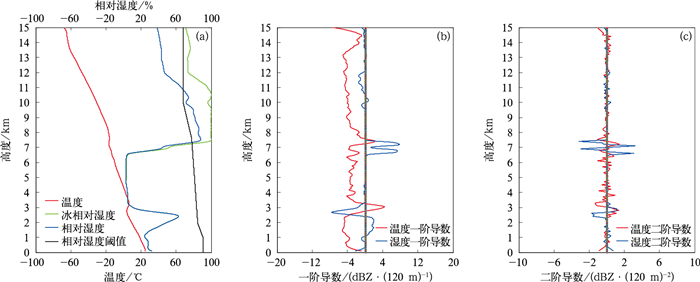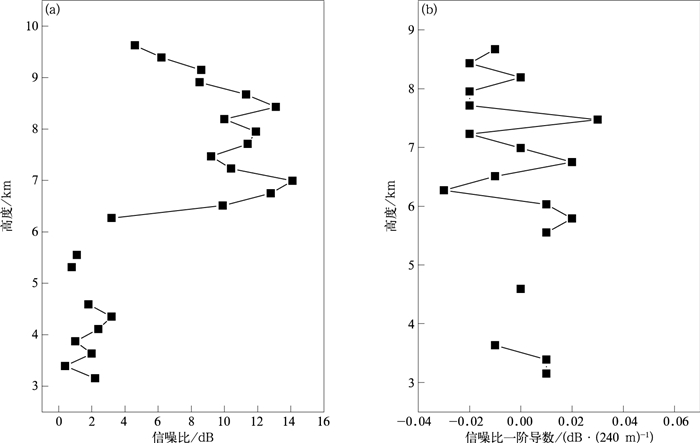|
[1]
|
Cess R D, Potter G L, Zhang M H, et al.Interpretation of snow-climate feedback as produced by 17 general circulation models. Science, 1991, 253(5022):888-892. doi: 10.1126/science.253.5022.888 |
|
[2]
|
Zhou C, Zelinka M D, Klein S A. Impact of decadal cloud variations on the Earth' s energy budget. Nature Geoscience, 2016, 9: 871-874. doi: 10.1038/ngeo2828 |
|
[3]
|
Stephens G L. Cloud feedbacks in the climate system: A critical review. J Climate, 2005, 18: 237-273. doi: 10.1175/JCLI-3243.1 |
|
[4]
|
Zelinka M D, Klein S A, Taylor K E. Contributions of different cloud types to feedbacks and rapid adjustments in CMIP. J Climate, 2013, 26(14): 5007-5027. doi: 10.1175/JCLI-D-12-00555.1 |
|
[5]
|
Liu C W, Guo X L, Duan W, et al. Observation and analysis of microphysical characteristics of stratiform clouds with embedded convections in Yunnan. J Appl Meteor Sci, 2022, 33(2): 142-154. doi: 10.11898/1001-7313.20220202 |
|
[6]
|
Zhou Q, Zhang Y, Jia S, et al. Climatology of cloud vertical structures from long-term high-resolution radiosonde measurements in Beijing. Atmosphere, 2020, 11(4): 401. doi: 10.3390/atmos11040401 |
|
[7]
|
Guo X L, Fu D H, Guo X, et al. Advances in aircraft measurements of clouds and precipitation in China. J Appl Meteor Sci, 2021, 32(6): 641-652. doi: 10.11898/1001-7313.20210601 |
|
[8]
|
Liu J, Cui P, Xiao M. The bias analysis of FY-2G cloud fraction in summer and winter. J Appl Meteor Sci, 2017, 28(2): 177-188. doi: 10.11898/1001-7313.20170205 |
|
[9]
|
Illingworth A J, Hogan R J, O'Connor E J, et al. Cloudnet-Continuous evaluation of cloud profiles in seven operational models using ground-based observations. Bull Amer Meteor Soc, 2007, 88: 883-898. doi: 10.1175/BAMS-88-6-883 |
|
[10]
|
Zhong L Z, Liu L P, Ge R S. Characteristics about the millimeter wavelength radar and its status and prospect in and abroad. Adv Earth Sci, 2009, 24(4): 383-391. doi: 10.3321/j.issn:1001-8166.2009.04.004 |
|
[11]
|
Zhang Y, Zhou Q, Lv S, et al. Elucidating cloud vertical structures based on three-year Ka-band cloud radar observations from Beijing, China. Atmos Res, 2019, 222: 88-99. doi: 10.1016/j.atmosres.2019.02.007 |
|
[12]
|
Zhou Q, Zhang Y, Li B, et al. Cloud-base and cloud-top heights determined from a ground-based cloud radar in Beijing, China. Atmos Environ, 2019, 201: 381-390. doi: 10.1016/j.atmosenv.2019.01.012 |
|
[13]
|
Tao F, Guan L, Zhang X F, et al. Variation and vertical structure of clear-air echo by Ka-band cloud radar. J Appl Meteor Sci, 2020, 31(6): 719-728. doi: 10.11898/1001-7313.20200607 |
|
[14]
|
Martucci G, Milroy C, O'Dowd C D. Detection of cloud-base height using Jenoptik CHM15K and Vaisala CL31 ceilometers. J Atmos Oceanic Technol, 2010, 27(2): 305-318. doi: 10.1175/2009JTECHA1326.1 |
|
[15]
|
Borg L A, Holz R E, Turner D D. Investigating cloud radar sensitivity to optically thin cirrus using collocated Raman lidar observations. Geophys Res Lett, 2011, 38(38): 387-404.
|
|
[16]
|
Gage K S, Green J L, Vanzandt T E. Use of Doppler radar for the measurement of atmospheric turbulence parameters from the intensity of clear-air echoes. Radio Science, 1980, 15: 407-416. doi: 10.1029/RS015i002p00407 |
|
[17]
|
Guan L, Dai J H, Tao L, et al. Application of QVP method to winter precipitation observation based on polarimetric radar. J Appl Meteor Sci, 2021, 32(1): 91-101. doi: 10.11898/1001-7313.20210108 |
|
[18]
|
Zhang X F, Wang Z C, Mao J J, et al. Experiments on improving temperature and humidity profile retrieval for ground-based microwave radiometer. J Appl Meteor Sci, 2020, 31(4): 385-396. doi: 10.11898/1001-7313.20200401 |
|
[19]
|
Zhou Q, Zhang Y, Jin J, et al. Comparison of atmospheric boundary layer height retrieved from radiosonde and groundbased microwave radiometer measurements. IEEE Xplore, 2020. DOI: 10.1109/ICMO49322.2019.9026100. |
|
[20]
|
Naud C, Muller J P, Clothiaux E E. Comparison between active sensor and radiosonde cloud boundaries over the ARM Southern Great Plains site. J Geophys Res Atmos, 2003, 108(D4): 291-302.
|
|
[21]
|
Tang Y J, Ma S Q, Yang L, et al. Observation and comparison of cloud-base heights by ground-based milllimeter-wave cloud radar. J Appl Meteor Sci, 2015, 26(6): 680-687. doi: 10.11898/1001-7313.20150604 |
|
[22]
|
|
|
[23]
|
|
|
[24]
|
Zhu Q G, Lin J R, Shou S W, et al. Principles and Methods of Synoptic Science. Beijing: China Meteorological Press, 2012.
|
|
[25]
|
|
|
[26]
|
|
|
[27]
|
Zhang J, Chen H, Bian J, et al. Development of cloud detection methods using CFH, GTS1, and RS80 radiosondes. Adv Atmos Sci, 2012, 29(2): 236-248.
|
|
[28]
|
|
|
[29]
|
|
|
[30]
|
|
|
[31]
|
|
|
[32]
|
|













 DownLoad:
DownLoad:
















